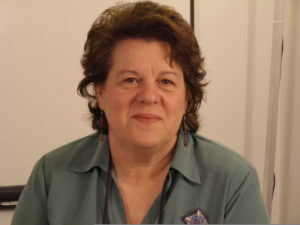
Trauma Education for Teachers: Institute for Family Professionals

The Institute for Family Professionals (IFP) is a professional development organization based in Philadelphia that has provided training for professionals who work with children and families since 2003. They provide researched and proven best practices on in-depth topics such as trauma, anger and discipline.
The IFP Understanding Trauma program for teachers
“Our Understanding Trauma program for teachers provides a safe haven in which teachers can learn, grow, and discover the complex world of trauma education,” said Diane Wagenhals, program director for the Institute for Professional Education & Development of Lakeside Educational Network and The Institute for Family Professionals. “It encompasses information, concepts, approaches, principles and skills that have been developing over the last 20 years and provides new awareness and insights on the nature of trauma.”
Wagenhals said it’s crucial for teachers to understand that students may have unresolved trauma-related issues and needs. Educators may also feel overwhelmed by the impact trauma has had on children in their classrooms. IFP classes invite teachers to learn about the many nuances of trauma, as well as the basic principals of trauma education.
Training teachers to navigate trauma-related issues in the classroom
“Educators need to be aware that trauma is not the fault of students, nor are the behaviors that result when traumas are not effectively addressed,” said Wagenhals.
“Perhaps the most important thing for educators today to be aware of is that all the leading neuroscience points to the importance of healthy, safe and strong relationships to both buffer students and help them cope with their trauma-related symptoms,” she continued.
Wagenhals described the type of trauma students may face. This can be a single-event trauma that is situational — such as a fire or accident — or a much more complex relational trauma, where trust is violated.
Types of trauma students can experience
In the 1990s, the Centers for Disease Control and Prevention and Kaiser Permanente began to examine whether childhood exposure to multiple stressors increased a person’s risk for health problems in adolescence and adulthood. Participants in the resulting Adverse Childhood Experiences (ACE) study completed a questionnaire about childhood experiences of abuse, neglect and violence. All the categories of the ACE survey constitute traumas, including:
- The result of abuse, neglect or loss of safety
- Developmental: Starting in utero and impacting the architecture of the developing brain
- Transgenerational: Passed from one generation to another
- Embedded in families, communities and whole systems
- The result of chronic stress from which a child cannot escape
- Related to attachment issues
Trauma can be chronic and complex. “Students come from all different backgrounds and have been exposed to all different kinds of traumas,” said Wagenhals. “How powerful any given trauma is will depend on the resilience of each student and his or her protective factors.”
Advice for educators who work with traumatized children
Wagenhals offered advice for teachers on effectively supporting children who have experienced situational trauma or relational wounding.
Difficult behavior may be the result of underlying trauma
Be clear that many difficult and challenging behaviors teachers experience are the direct result of unresolved trauma in their students. Responding from a position of respect for that underlying traumatic issue can change the dynamics of interactions.
Maintain high levels of compassion, patience and tolerance
Strong relational skills that promote connections based on a foundation of respect, safety and trust are invaluable for teachers who work with traumatized students. Over time, these strategies can contribute to recovery and healing for students.
Use somatosensory strategies to promote regulation
“Teachers need to know the skills that can promote regulation in their students, [and] they need strategies for responding when students are triggered and therefore are either dissociating or becoming hypervigilant,” she said. “They need to know which brain state a child might be in and how one responds when someone is in that brain state so that expectations are reasonable.”
Teachers can use somatosensory activities to help students who have issues around self-regulation. These techniques are similar to “brain breaks” and include short games, singing a song, doing a dance, or other uses of rhythm, movement and sound to manage students’ energy levels throughout the day.
Seek support to avoid secondary traumatization
Educators who work with traumatized students and families can be vicariously traumatized through extended exposure to survivors’ recollections of grief, loss and emotional or physical violence. To avoid burnout, teachers should maintain a support network that acts as a safe place to process and be renewed.
Erin Flynn Jay is a writer, editor and publicist, working mainly with authors and small businesses since 2001. Erin’s interests also reach into the educational space, where her affinity for innovation spurs articles about early childhood education and learning strategies. She is based in Philadelphia.
Categorized as: Tips for Teachers and Classroom Resources
Tagged as: Professional Development
